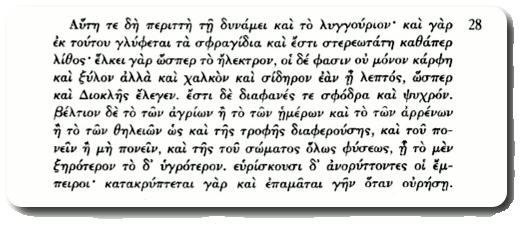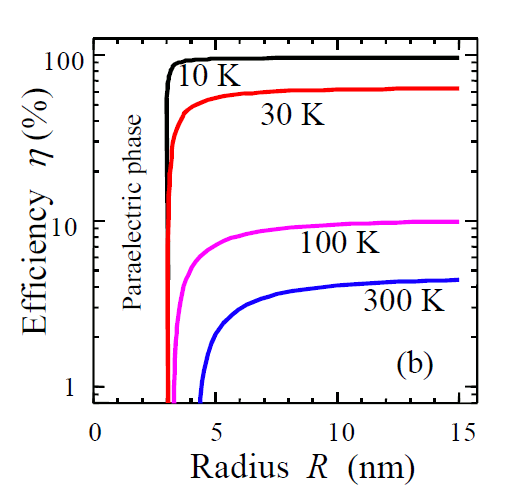| Tikalon Blog is now in archive mode.
An easily printed and saved version of this article, and a link
to a directory of all articles, can be found below: |
|
This article |
| Directory of all articles |
Pyroelectric Energy Harvesting
October 15, 2010
There's much current interest in
environmental energy harvesting as a means to power wireless sensors and other devices. Aside from using
photovoltaics to harvest light energy, it's possible to use
vibration,
air flow,
impact of rain drops, and
temperature difference, all of which I've reviewed in this blog. A coffee cup sized vibration energy harvester using magnets and an
inductance coil converts about 30% of applied vibration energy into electricity.[1] Even then, the energy produced is less than 50 microwatts. A small
piezoelectric airflow energy harvester has produced 296 microwatts for an 8.0 m/sec airflow.[2] The exotic raindrop energy harvester produces about one Watt-hr per square meter per year for rainfall typical in
France.[3] A small
thermoelectric energy harvester that extracts energy from the temperature difference between body temperature and ambient can generate up to 100 microwatts of power.[4]
Thermoelectrics, which use some
exotic semiconductors and are based on the
Seeback Effect, are not the only means to extract energy from a temperature difference. Whereas thermoelectrics generate a voltage whenever there's a temperature difference from one side of a device to the other,
pyroelectrics generate a temporary voltage when heated or cooled. No temperature difference is required, which seems to violate the
Second Law of Thermodynamics, since we're extracting work from the system without a differential temperature. The Second Law is still in effect, but how does this happen? In certain crystal structures, temperature change causes a shift in relative atomic positions that leads to a change in
polarization, similar to what happens when you squeeze a
piezoelectric crystal.
The existence of pyroelectricity has been known for quite some time.[5] In 314 BC,
Theophrastus wrote about the ability of the mineral,
tourmaline (λυγγουριον in Greek), to attract straw and ash when heated. Both straw and ash are lightweight
insulators, so they can be moved by a static electrical charge, much like paper being moved by a plastic comb.
Linnaeus, known for quite a few things scientific, proposed that this was caused by static electricity. It wasn't until 1824 that the optical physicist
David Brewster, of the eponymous
Brewster's angle, named the effect pyroelectric. Understandably,
Pierre Curie and
Jacques Curie, noted for their work on piezoelectricity, studied pyroelectricity as well.

Portion of "On Stones" by Theophrastus concerning tourmaline [6].
Modern interest in pyroelectricity started in 1938 with a paper by Yeou Ta, a chemist at the
Sorbonne (Paris).[5] Ta realized that tourmaline could be used as an
infrared sensor, and there was classified research on the topic during
World War II.[5] More than 8,500 papers on pyroelectricity have been published from 1960-2005, and a few patents. [5,7]
Pyroelectrics can be useful in an environment in which temperature cycles are expected, such as the
diurnal temperature fluctuations normally present anywhere on Earth. An advantage of using pyroelectrics over thermoelectrics is their effectiveness at low temperatures. There are certain housekeeping chores that are required to make energy harvesting from pyroelectrics possible. The most important problem is that the sign of the voltage changes depending on whether the material is being heated or cooled, so we need some sort of
rectification.
Recent research by a team of scientists from the
National Academy of Sciences of the Ukraine has focused on the size affect of energy harvesting from pyroelectric
nanowires.[8-10] They found that the pyroelectric coefficient strongly increases as the wire radius decreases. Calculations of the maximum efficiency of the
pyroelectric energy harvesting was shown to approach the
Carnot limit for low temperatures. Unfortunately, low temperature in this case means
really low temperature, as the figure shows. Using
polarized Pb(Zr,Ti)O
3 ferroelectric nanowires arrays, they were able to achieve open circuit voltages of 0.1 volt, and a short-circuit current density of 0.5 nA/mm
2, for a temperature variation of 0.1 K/sec.[9] This optimistically translates to 50 nanowatts/cm
2 for the same temperature change by my
back-of-the-envelope calculation, but more likely just half that value.

Energy conversion efficiency of pyroelectric nanorods as a function of rod radius at various temperatures (via arXiv, Ref. 9)
How could I end this article without a brief mention of
pyroelectric fusion? The idea is to use pyroelectric crystals to generate electrostatic fields high enough to accelerate
deuterium or
tritium ions into a
metal hydride target that also contains these
isotopes to cause
fusion. In 2005, a research team at the
University of California at Los Angeles used a
lithium tantalate (LiTaO
3) pyroelectric crystal to accelerate deuterons (
2H, or simply D) into a target of
erbium deuteride (ErD
2) to produce a thousand fusion reactions per second in the production of
3He and
neutrons.[11]
2H + 2H --> 3He + n
This research is still in its early stages, but it's something worth following.
References:
- Energy Harvesting, This Blog, July 18, 2007.
- Flutter Power, This Blog, August 17, 2010.
- Rain Power, This Blog, January 30, 2008.
- Hot Bodies, This Blog, July 22, 2010
- Sidney B. Lang, "Pyroelectricity: From Ancient Curiosity to Modern Imaging Tool, Physics Today, August 2005, pp. 31-36.
- Earle Radcliffe Caley and John F.C. Richards, "Theophrastus on Stones: Introduction, Greek Text, English Translation, and Commentary," Ohio State University (Columbus, Ohio, 1956).
- Randall B. Olsen, "Pyroelectric energy converter and method," US Patent No. 4,647,836 (March 3, 1987)
- A. N. Morozovska, E. A. Eliseev, G. S. Svechnikov1, and S. V. Kalinin, "Pyroelectric response of ferroelectric nanowires: Size effect and electric energy harvesting," J. Appl. Phys. vol. 108, 042009 (2010); doi:10.1063/1.3474964, published online 31 August 2010.
- A.N. Morozovska, E.A. Eliseev, G.S. Svechnikov, S.V.Kalinin, "Pyroelectric response of ferroelectric nanoparticles: size effect and electric energy harvesting," arXiv Preprint, August 17, 2009.
- Ovidiu, "Ukrainian and American Team Makes Ferroelectric Nanowires Harvest Heat Differences," Greenoptimistic.com, September 29, 2010.
- B. Naranjo, J.K. Gimzewski and S. Putterman, "Observation of nuclear fusion driven by a pyroelectric crystal," Nature vol. 434, no. 7037 (April 28, 2005), pp. 1115-1117.
Permanent Link to this article
Linked Keywords: Environmental energy harvesting; photovoltaics; vibration; air flow; impact of rain drops; temperature difference; inductance coil; piezoelectric; France; thermoelectric; bismuth telluride; Seeback Effect; pyroelectrics; Second Law of Thermodynamics; polarization; piezoelectric; Theophrastus; tourmaline; insulators; Linnaeus; David Brewster; Brewster's angle; Pierre Curie; Jacques Curie; "On Stones"; Sorbonne (Paris); infrared; sensor; World War II; diurnal temperature fluctuations; rectification; National Academy of Sciences of the Ukraine; nanowires; Carnot limit; polarized; ferroelectric; back-of-the-envelope calculation; pyroelectric fusion; deuterium; tritium; metal hydride; isotopes; fusion; University of California at Los Angeles; lithium tantalate; erbium; neutrons.